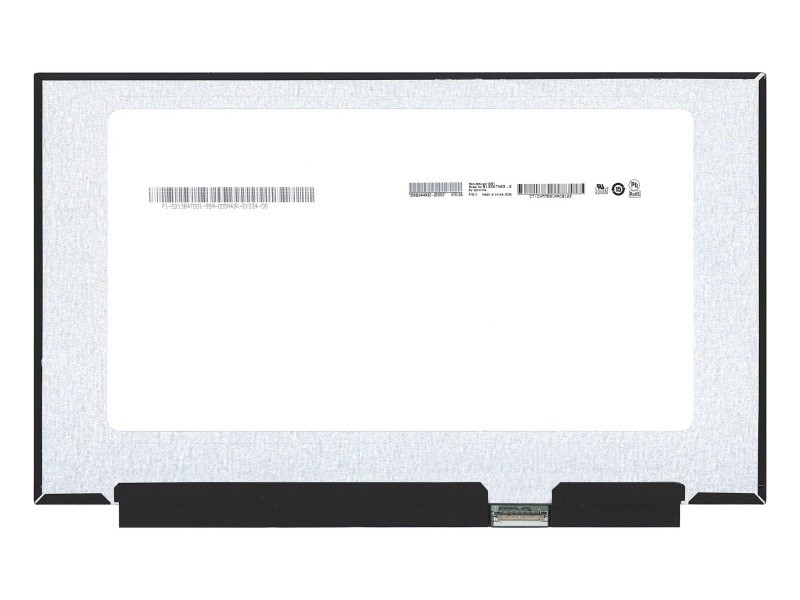Laptops have become a ubiquitous part of our lives, and LCD screens are one of the most important components of laptops. It is the primary means of displaying images, text, and video, and is critical to the overall user experience. In this article, we will take a deeper look at newest laptop lcd screen and explore its various components, types, and functions.
Newest laptop lcd screen component
A laptop LCD screen is made up of several components that work together to display an image. These components include backlights, polarizers, color filters, liquid crystals and electrodes. The backlight provides the light source, while the polarizer controls the direction of the light. Color filters control the color of light, while liquid crystals control the direction of light. The electrodes are responsible for applying current to the liquid crystal to change its orientation.
Newest laptop lcd screen type
There are two main types of laptop LCD screens: Twisted Nematic (TN) and In-Plane Switching (IPS). TN screens are the most common type of LCD screen found in laptops, and they are known for their fast response times and low power consumption. IPS screens, on the other hand, offer better color accuracy and wider viewing angles.
Features to consider when buying newest laptop lcd screen
The screen is one of the most important features to consider when shopping for a laptop. Some of the characteristics to consider when shopping for a laptop LCD screen include resolution, screen size, brightness, and color accuracy. A higher resolution will provide a sharper image, while a larger screen size will provide a better viewing experience. Brightness is also an important factor, as it affects how well the screen is viewed in bright light. Color accuracy is important for tasks like photo editing and graphic design.

FAQ of newest laptop lcd screen
The newest laptop lcd screen can suffer from a range of issues, including dead pixels, backlight bleeding, and color banding. Dead pixels are pixels on the screen that are stuck in one color and cannot be changed. Backlight bleeding occurs when light from the backlight leaks from the edges of the screen, resulting in uneven lighting. Color banding occurs when the screen is unable to display smooth transitions between colors, resulting in visible banding.
How to Care for Your Laptop LCD Screen
Proper care and maintenance of your laptop LCD screen will help prevent problems and prolong the life of the screen. Some tips for caring for your laptop LCD screen include keeping the screen clean, avoiding touching it with your fingers, using a screen protector, and adjusting brightness and color settings for optimal viewing.
Upgrading or Replacing a Laptop LCD Screen
If your laptop LCD screen is damaged or no longer functions properly, it may need to be upgraded or replaced. Upgrading the screen can increase resolution or provide better color accuracy, while replacing a damaged screen can restore laptop functionality. Always make sure the replacement screen is compatible with your laptop model and size, and seek professional help if you’re not sure how to replace the screen yourself.
The Future Development of Laptop LCD Screen
As technology continues to advance, the future development of newest laptop lcd screen may be worth watching. One such development is the integration of OLED (Organic Light Emitting Diode) technology into laptop screens, which improves color accuracy and contrast. Another development is the use of microLED technology, which offers better brightness and contrast than OLED screens.
Overall, a laptop LCD screen is an important part of any laptop, and understanding its various components, types, features, and common issues can help users make informed decisions when buying, upgrading, or maintaining a laptop. As technology continues to evolve, there may be more exciting developments in laptop screens to provide users with a better viewing experience.
The Importance of Calibrating Your Laptop LCD Screen
Calibrating the newest laptop lcd screen is very important for accurate and consistent color reproduction. Colors on the screen can become distorted over time, making it difficult to accurately edit photos or videos. By calibrating your screen, you can ensure that colors are accurate and consistent across devices and platforms.
How to Calibrate a Laptop LCD Screen
Calibrating the newest laptop lcd screen involves adjusting color settings and gamma for accurate color reproduction. There are various software tools for calibrating screens, such as DisplayCAL and X-Rite i1Profiler. These tools usually require a colorimeter or spectrophotometer to accurately measure the color output of the screen.
Effects of Laptop LCD Screens on Eye Health
Prolonged use of newest laptop lcd screen can cause eye strain and other eye health problems such as dry eyes, blurred vision, and headaches. This is due to the blue light emitted by the screen which disrupts the sleep-wake cycle and causes eye strain. To mitigate these effects, many laptop manufacturers now offer blue light filters or “night mode” settings to reduce the amount of blue light emitted by the screen.
Newest laptop lcd screenConclusion
Notebook newest laptop lcd screen and newest laptop touch screen etc. are key components of any laptop, and understanding its various components, types, features, and common problems is critical to making an informed decision when buying, upgrading, or maintaining a laptop. By taking good care of your screen, calibrating it for accurate color reproduction, and using a blue light filter, you can ensure a great viewing experience and protect your eye health. As technology continues to evolve, there may be more exciting developments in laptop screens that provide users with better viewing experiences and benefits.
Related Products







